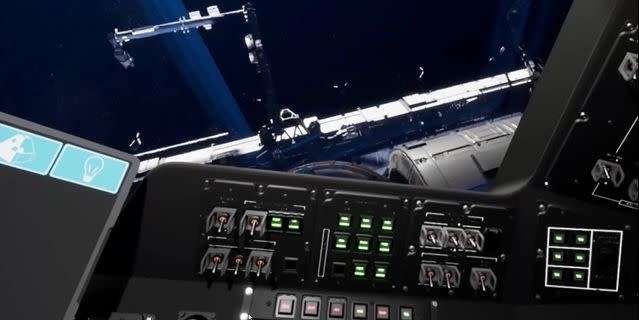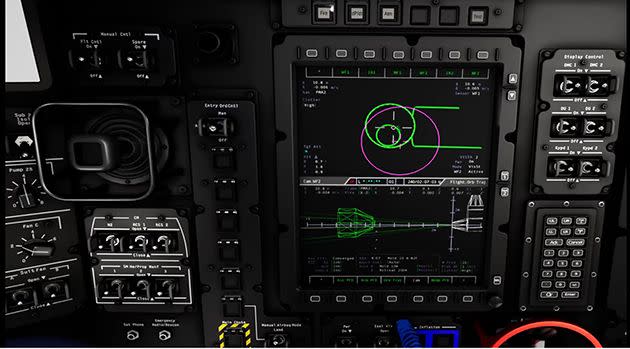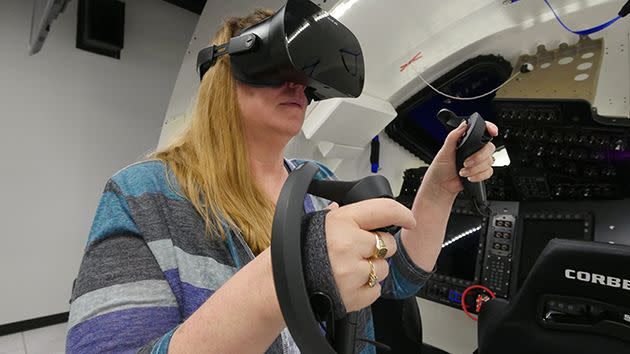Before These Astronauts Take Starliner to Space, They're Training in VR

Varjo, a virtual reality company based in Helsinki, Finland, has designed a VR training program for astronauts planning to take flight aboard Boeing's CST-100 Starliner.
The goal is for astronauts on the first crewed Starliner mission to have hundreds of hours of training under their belt, before ever leaving the Earth's atmosphere.
Through the VR system, astronauts can prepare for pre-launch, docking, and landing all in one place.
Boeing will hold its second Orbital Flight Test for its CST-100 Starliner sometime this fall, following last year's attempt, which failed due to software errors. And even though Starliner's first crewed launch won't happen until 2021, the astronauts who will one day fly to the International Space Station (ISS) in the crew capsule are already hard at work training for pre-launch, docking, and landing—all in virtual reality.
In a press release, Boeing announced the members of Starliner's crew are using a new VR system to train right from their offices, without always having to rely on physical simulators the size of flight decks. Eventually, the goal is to integrate the VR system into Boeing's overall training network, so that flight controllers in Mission Control can use either VR or the physical simulator to practice alongside the headset-clad astronauts.
VR isn't all that new for astronauts, as NASA has used the technology for space walk preparation in the past. However, the new VR training system is the first full-scale program that allows astronauts to test every part of a mission in one place. While Boeing isn't looking to replace its two existing fixed simulators, it sees the VR system as a nice complement.
Varjo, a VR company based in Helsinki, Finland, developed the system, working with Boeing engineers to integrate it into their existing training software. It consists of Boeing-tailored laptops and hand controllers, plus custom Varjo headsets, which the company claims has "human-eye resolution."

Working with Varjo, the Boeing team could finally recreate a series of display panels in the capsule, which show important flight data, like the velocity and trajectory of the aircraft as it moves through space. That includes two screens, each about the size of an iPad.
These screens were too grainy to read with earlier VR headsets, but with 60 pixels per degree in the center of the field of view, astronauts could see the details in the Varjo headset without having to move closer to the simulated screen. That's important, because getting too close to the display panels means obscuring the view of your hands in VR—which could take away from the astronauts' ability to get the full experience of pressing the right buttons and switches, establishing some important muscle memory.
"This one feels like you’re there. You really get the presence of being in the environment,” Connie Miller, a programmer with Boeing Houston, who coordinated the system development, said in the release.
Miller and spaceflight training software engineer Jim May have been thinking about ways to incorporate VR into spaceflight training since 2017, according to a Varjo blog post. Before joining forces with Varjo, Boeing developers in Australia had already begun work modeling the Starliner console with Unreal Engine, a 3D-modeling platform that Epic Games initially created for a first-person shooter game.

Soon, the Starliner crew will be able to simulate and work through dangerous potential scenarios to build up their decision-making abilities and response times, which should mean a safer spaceflight in real life. The final software tweaks are underway, according to Varjo, and crews should see the headsets in the coming weeks.
You Might Also Like

